| Back to Back Issues Page |
 |
|
Dallying In The Dirt, Issue #126 --- I looking for a place for my Mighty Mato May 07, 2013 |
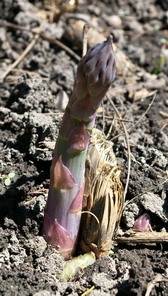
Spring is here! So much to do and write about and never enough time to do both. I start to wish for a rainy day so that I can drag myself out of the garden and into the office. We ate the first Asparagus on the 29th of April this year, about two weeks later than last year. It is always worth the wait. If you don’t already have this wonderful vegetable in your garden, plant some now. You can easily grow it from seed or the garden centres have packages of one year old roots. It takes two to three years to get it established in your garden but then you can pick it every spring for the next thirty years. Its large frothy fern-like summer foliage is a great background for the summer blooming perennials. 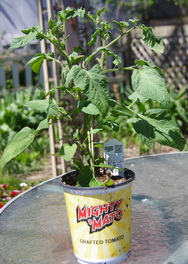 The most interesting thing to me was the Mighty Mato. The greenhouse industry has been using grafted Tomatoes for several years but there is now a rootstock that has been developed for outdoor gardeners. Grafting desirable varieties on to this rootstock produces several benefits. They grow much larger and faster. The sample that they had at the Loblaws’ day was close to 2 M tall and about a metre wide and it was growing in a container. Nobody could take it home and it was donated to the Toronto Botanical Gardens, the site of the event. The rootstock also gives the plant much of its disease resistance qualities. One plant in your garden could replace the several that you used to grow. Heritage varieties such as the favourite Brandywine have been difficult to grow because they have no disease resistance and they are late to fruit. Loblaws is now offering Brandywine as a grafted specimen allowing us to enjoy its flavour while greatly reducing its difficulties. Try it and be amazed but be prepared to support its massive growth.
The most interesting thing to me was the Mighty Mato. The greenhouse industry has been using grafted Tomatoes for several years but there is now a rootstock that has been developed for outdoor gardeners. Grafting desirable varieties on to this rootstock produces several benefits. They grow much larger and faster. The sample that they had at the Loblaws’ day was close to 2 M tall and about a metre wide and it was growing in a container. Nobody could take it home and it was donated to the Toronto Botanical Gardens, the site of the event. The rootstock also gives the plant much of its disease resistance qualities. One plant in your garden could replace the several that you used to grow. Heritage varieties such as the favourite Brandywine have been difficult to grow because they have no disease resistance and they are late to fruit. Loblaws is now offering Brandywine as a grafted specimen allowing us to enjoy its flavour while greatly reducing its difficulties. Try it and be amazed but be prepared to support its massive growth. Apparently I need to offer half of an apology to the squirrels. They certainly ate all of the 500 new Crocus planted in the front yard but they seemed to have missed some of the 650 new Tulips, some varieties more than others. They are now in bloom and the front yard is in the middle of its best garden season. I planted all of those new Tulips because most of my older Tulips did not bloom last year. I was going to dig them out but never seemed to get to that job. Some procrastination is good; most of those large clumps of older Tulips are blooming along with the new ones this year. If you live anywhere near me, it’s worth the trip to see the front yard. Now I get to complain about the weather. Spring was very slow arriving and then lasted for a day. We are now having unseasonably warm weather. While this makes for pleasant gardening it is seriously shortening the bloom time for the Tulips and Narcissus. I spend many moments each day just wandering among them and resisting the urge to take yet another fifty photographs. The later varieties will soon replace the early ones and change the look and feel of this delightful space.
Apparently I need to offer half of an apology to the squirrels. They certainly ate all of the 500 new Crocus planted in the front yard but they seemed to have missed some of the 650 new Tulips, some varieties more than others. They are now in bloom and the front yard is in the middle of its best garden season. I planted all of those new Tulips because most of my older Tulips did not bloom last year. I was going to dig them out but never seemed to get to that job. Some procrastination is good; most of those large clumps of older Tulips are blooming along with the new ones this year. If you live anywhere near me, it’s worth the trip to see the front yard. Now I get to complain about the weather. Spring was very slow arriving and then lasted for a day. We are now having unseasonably warm weather. While this makes for pleasant gardening it is seriously shortening the bloom time for the Tulips and Narcissus. I spend many moments each day just wandering among them and resisting the urge to take yet another fifty photographs. The later varieties will soon replace the early ones and change the look and feel of this delightful space.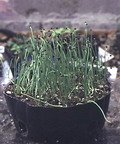 All of the cool season vegetables are planted, except for the last of the Onions. Planting Onions is tedious work. One little transplant yields only one Onion, obviously, whereas planting one Broccoli plant will produce several meals. I plant about 8 Broccoli but must plant dozens of Onions to fill the same number of dinner plates. They are truly worth it even if it doesn’t always feel like it at the end of a planting day. My seven varieties of Potatoes arrived a while ago and after several days exposed to the sun in the solarium they had nice little green shoots appearing. They were planted about a week ago in the garden and into a few containers. It was interesting to note, when I was in the local garden centre last week, that they now carry several varieties of Potatoes a significant change in the last few years. Check out the varieties and plant some early and some late ones to extend your season.
All of the cool season vegetables are planted, except for the last of the Onions. Planting Onions is tedious work. One little transplant yields only one Onion, obviously, whereas planting one Broccoli plant will produce several meals. I plant about 8 Broccoli but must plant dozens of Onions to fill the same number of dinner plates. They are truly worth it even if it doesn’t always feel like it at the end of a planting day. My seven varieties of Potatoes arrived a while ago and after several days exposed to the sun in the solarium they had nice little green shoots appearing. They were planted about a week ago in the garden and into a few containers. It was interesting to note, when I was in the local garden centre last week, that they now carry several varieties of Potatoes a significant change in the last few years. Check out the varieties and plant some early and some late ones to extend your season.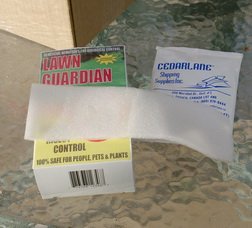 Today I ordered three varieties of Nematodes. Nematodes are microscopic worm like creatures and there are hundreds of types of them existing, mostly in our soil. Some of these creatures are very beneficial to gardeners as they attack some of the worst bugs in our gardens. They are very host specific and that’s why I ordered three different types. One controls the very nasty Iris borer that can destroy my prized Iris collection. Another controls the Birch leaf miner that hollows out and turns brown the leaves of our lovely white Birches. I don’t have any Birch but I do have a wonderful Camperdown Elm that is attacked by a very similar bug. I have distributed these Nematodes around the Elm for the past two years and about 95% of the problem has disappeared. The third package of Nematodes will go on the vegetable plots where they will attack a variety of nasties such as the carrot root worm, cut worms and flea beetles. These wonderful garden helpers are available from Natural Insect Control a company in the Niagara area of Canada. They actually work much better than the banned chemicals that we used to use and they help keep our gardens totally chemical free. A few million of them will arrive on a small piece of sponge. I’ve never attempted to count them to see if they were all there.
Today I ordered three varieties of Nematodes. Nematodes are microscopic worm like creatures and there are hundreds of types of them existing, mostly in our soil. Some of these creatures are very beneficial to gardeners as they attack some of the worst bugs in our gardens. They are very host specific and that’s why I ordered three different types. One controls the very nasty Iris borer that can destroy my prized Iris collection. Another controls the Birch leaf miner that hollows out and turns brown the leaves of our lovely white Birches. I don’t have any Birch but I do have a wonderful Camperdown Elm that is attacked by a very similar bug. I have distributed these Nematodes around the Elm for the past two years and about 95% of the problem has disappeared. The third package of Nematodes will go on the vegetable plots where they will attack a variety of nasties such as the carrot root worm, cut worms and flea beetles. These wonderful garden helpers are available from Natural Insect Control a company in the Niagara area of Canada. They actually work much better than the banned chemicals that we used to use and they help keep our gardens totally chemical free. A few million of them will arrive on a small piece of sponge. I’ve never attempted to count them to see if they were all there.Time to answer a few questions. If you have a gardening question just ‘reply’ to this newsletter and send me your query. I try to answer most of the questions and the ones that I answer here are those that I think will have the widest interest. You can also find the latest garden updates on the front page of gardening-enjoyed.com. I try to change it every few days so check back often. Barb Asks? What do you think about using a microbial inoculant in the soil before planting peas? Is it considered organic gardening? Thanks |
| Back to Back Issues Page |
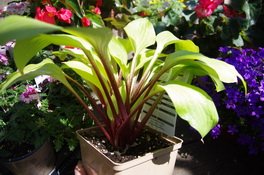 Joined many other local garden writers for a great day last week. I usually avoid the instant garden centres that pop up in front of most big box stores but there is one significant exception. Loblaws works hard to differentiate themselves. They travel the world looking for new and interesting plants for our gardens and they actually take care of them when they arrive at their stores. Full disclosure here, they provided the great day. A great lunch and a virtual tour of their offerings for this year and then as many sample plants as we can carry home. They showed us a great selection of new annual flowers and some interesting containers to grow them in. A Fig that is root hardy in
Joined many other local garden writers for a great day last week. I usually avoid the instant garden centres that pop up in front of most big box stores but there is one significant exception. Loblaws works hard to differentiate themselves. They travel the world looking for new and interesting plants for our gardens and they actually take care of them when they arrive at their stores. Full disclosure here, they provided the great day. A great lunch and a virtual tour of their offerings for this year and then as many sample plants as we can carry home. They showed us a great selection of new annual flowers and some interesting containers to grow them in. A Fig that is root hardy in